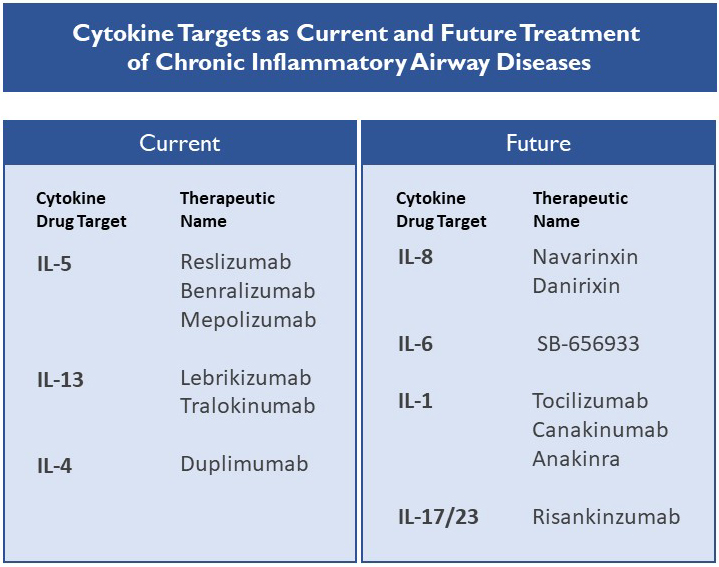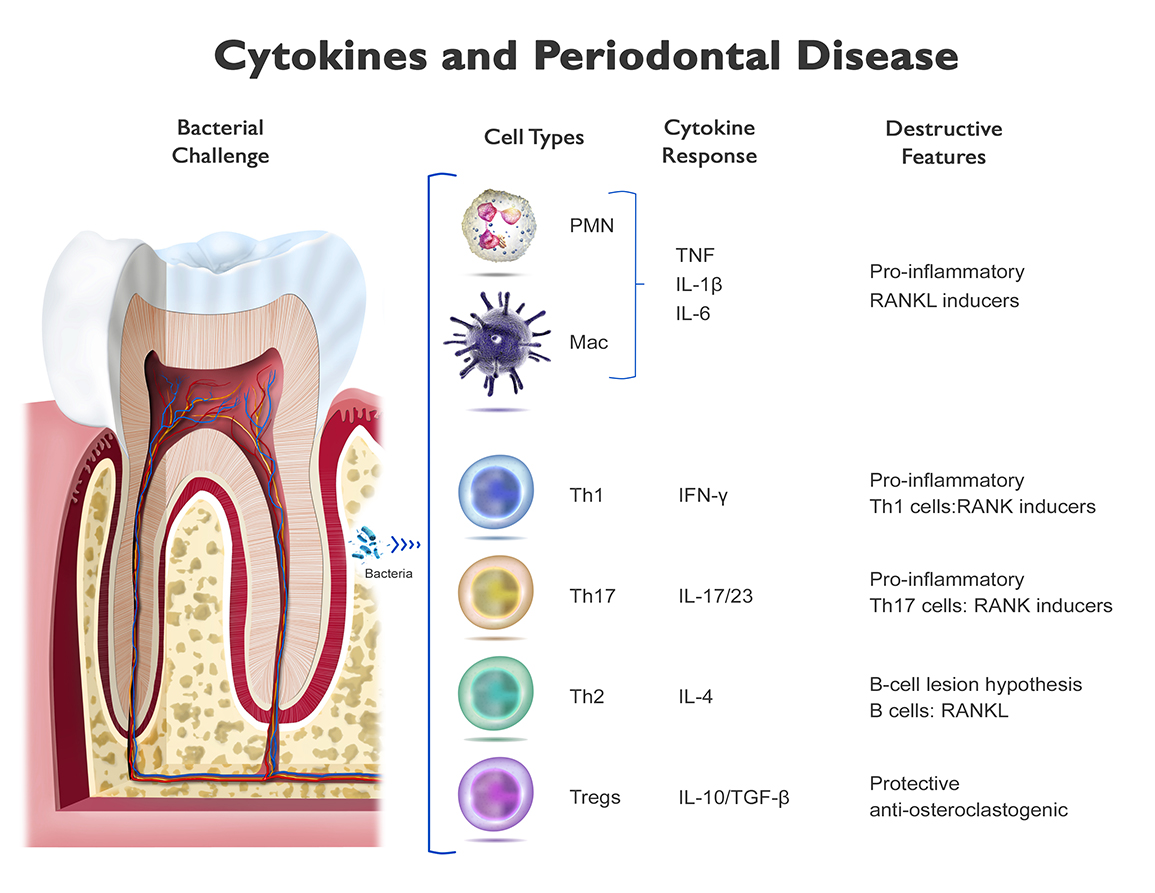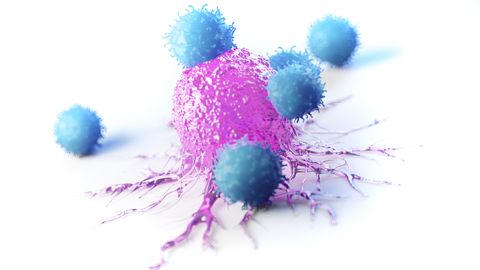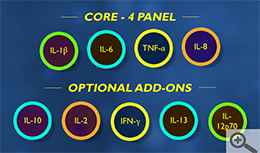Drop Date: November 2019
Clarifying Cytokines in Saliva
In This Drop: Clarifying Cytokines in Saliva
With the release of the Expanded Salimetrics Cytokine Panel, now is a great opportunity to further explore cytokine biology and review the recent surge of interest in cytokines for salivary bioscience research.
In 2016, Salimetrics SalivaLab validated and released the Core 4 Salivary Cytokine Panel, which included IL-1 Beta, IL-6, IL-8, and TNF-alpha. The initial response from the research community has been overwhelming in its desire to integrate salivary cytokines into multi-disciplinary research. To further facilitate this need and continue the scientific momentum, Salimetrics recently released an Expanded Salivary Cytokine Panel that now includes 5 additional salivary cytokines (IFN-γ, IL-2, IL-10, IL-12p70, and IL-13) which can optionally be measured along with the Core 4. The addition of these new salivary cytokines to the SalivaLab test menu further enables researchers to expand into a new era of discovery. In this bulletin, we want to share with you some of the exciting research being done with cytokines and outline how cytokine biology plays an important role in certain diseases and viral infections.
Background
Cytokines are small proteins, essential in cell signaling and responding to sites of inflammation and infection. Cytokines help regulate immune responses that are associated with various diseases and infections. The benefit of measuring cytokine levels in saliva through noninvasive methods allows researchers to analyze important factors that contribute to the immune response of inflammation and feeling “ill”. Research now shows evidence that the impact of stress also causes the release of pro-inflammatory cytokines, and researchers are now determining the effects of these changes on behavior and overall health. Over time, chronic stress can disrupt the balance of cytokine levels in circulation, which may alter the body’s ability to fight infections or control disease symptoms and progression. Researchers in dentistry have long been studying the impact of salivary cytokines in response to oral health, which also leads to systemic effects if disease progression is not addressed over time. Additional research in asthma, oral cancer, immune health, and oral lichen planus have also benefited from the investigation of salivary cytokines.
Acute and Chronic Stress
Measuring cytokines and chemokines in oral fluid offers a non-invasive assessment of biological markers associated with acute and chronic stress. A recent review by Slavish et al., summarizes several research efforts that have turned to measuring inflammatory cytokines in saliva for acute stress and the impact on brain, behavior and immunity (1). In a more recent study, levels of IL-1 β, IL-18 and IL-6 have been associated with an emotional difference during stress in young men (2). Within the panel of cytokines offered by the Salimetrics testing facility, IL-1 β is one central regulator of the acute stress response and elevated levels of this cytokine, have been linked to various psychosocial and physiologic impacts of stress (3-7). The link between cytokines and behavior has been directly established in the central nervous system, where signaling directly leads to behavior associated with being ill, including fatigue, loss of appetite, irritability and poor cognitive function (8). Various inflammatory cytokine levels have been associated with early life adversity, markers of toxic stress (9) and immune function (10).
Asthma and Chronic Obstructive Pulmonary Disease Research
Several cytokines are thought to orchestrate and perpetuate the chronic airway inflammation observed in asthma and COPD. These are mostly in the type 2 immune response class (11). The critical roles of these cytokines in driving immune pathology in asthma and COPD is emphasized by active drug programs targeting them for current and future treatments of these diseases (12, 13). Since oral and lung fluids are somewhat contiguous, markers in saliva directly reflect levels in the inflamed airway. In fact, saliva samples have been used to monitor cytokine levels of interest in children and adults with airway inflammation (14). This is a developing area of research attractive to child asthma or adult COPD researchers that are interested in more frequent, at home sampling to better understand these diseases. For the interested reader please see (11, 15, 16).

Dentistry for Gingivitis, Periodontal Disease and Caries Research
Often, each of these diseases have profound symptomology that enables visual diagnosis of disease and progression (e.g., in pocket depth for gingivitis) and progressive disease is common without treatment. However, there is interest in the dental research community to study key salivary cytokines in at-risk pre-symptomatic individuals as a means to study mechanisms of disease onset that may enable earlier preventative treatments in the clinic. Periodontal disease and gingivitis involve chronic inflammation fueled by pro-inflammatory cytokines, connective tissue breakdown and bone erosion (17). Many of these cytokines are part of our Core 4 panel and are in the inflammatory cytokine category. However, several may be of interest to researchers to better understand early events that lead to oral immune pathology.

Oral Cancer Research
Many large-scale efforts to identify biomarkers of oral cancers and precancerous lesions have involved extensive expression profiling and proteomics in saliva. The efficacy of salivary biomarkers has been assessed as diagnostic tools in the diagnosis or screening for oral squamous cell carcinoma (OSCC), (19). One promising chemokine that was identified and later confirmed in several follow up studies is IL-8. Other cytokines offered in our menu that have been associated with various oral malignancies include IL-β, IL-6 and TNF-α (20-23). Oral cancer researchers can use saliva to measure markers whose relevance is to identify pathology at the source of the marker i.e., in the oral cavity. Local confounding factors that must be controlled for when measuring the inflammatory cytokines would be local inflammation and/or periodontal disease.

Cytokines Associated with Disease Severity of Oral Lichen Planus
Oral lichen planus (OLP) is a chronic inflammatory disease (24) of unknown cause, where elevated cytokines, including IL-6, IL-8, IL-17, IFN-γ, and TNF-α have been observed when compared to healthy individuals (25). Many studies have established interesting relationships with the levels of these salivary cytokines and the development and progression of OLP which raises the possibility that salivary cytokine measures may be valuable predictive markers for OLP (25).
Adding Cytokines to Your Research
From the beginning, Salimetrics has been partnering with researchers to harness emerging knowledge and develop tools that make salivary cytokine research easy. Today, a multitude of fields are benefiting from Salivary Cytokine Research, and Salimetrics is here to help facilitate that research with the methods needed to continue to advance the cutting edge. While studying cytokines in saliva can help researchers analyze stress, asthma, chronic obstructive pulmonary disease, periodontal disease, oral viral infections, HSV, and more, it’s important to understand basic cytokine biology, so that trusted, validated methods for salivary bioscience testing are used. Through a high-quality lab, such as the Salimetrics SalivaLab, you can trust that the data you receive meets the standards required for maintaining rigor and reproducibility in Salivary Bioscience.
Whether your research entails cytokines in saliva or any other marker on the Salimetrics test-menu, Salimetrics is ready to assist – just contact us to get started
REFERENCES & RELATED RESEARCH
- Slavish DC, Graham-Engeland JE, Smyth JM, Engeland CG. Salivary markers of inflammation in response to acute stress. Brain, behavior, and immunity. 2015;44:253-69.
- La Fratta I, Tatangelo R, Campagna G, Rizzuto A, Franceschelli S, Ferrone A, et al. The plasmatic and salivary levels of IL-1beta, IL-18 and IL-6 are associated to emotional difference during stress in young male. Sci Rep. 2018;8(1):3031.
- Goshen I, Yirmiya R. Interleukin-1 (IL-1): a central regulator of stress responses. Front Neuroendocrinol. 2009;30(1):30-45.
- Szabo YZ, Fernandez-Botran R, Newton TL. Cumulative trauma, emotion reactivity and salivary cytokine levels following acute stress in healthy women. Anxiety Stress Coping. 2019;32(1):82-94.
- Szabo YZ, Newton TL, Miller JJ, Lyle KB, Fernandez-Botran R. Acute stress induces increases in salivary IL-10 levels. Stress. 2016;19(5):499-505.
- Muller N, Krause D, Barth R, Myint AM, Weidinger E, Stettinger W, et al. Childhood Adversity and Current Stress are related to Pro- and Anti-inflammatory Cytokines in Major Depression. J Affect Disord. 2019;253:270-6.
- Riis JL, Out D, Dorn LD, Beal SJ, Denson LA, Pabst S, et al. Salivary cytokines in healthy adolescent girls: Intercorrelations, stability, and associations with serum cytokines, age, and pubertal stage. Developmental psychobiology. 2014;56(4):797-811.
- Dantzer R, O’Connor JC, Freund GG, Johnson RW, Kelley KW. From inflammation to sickness and depression: when the immune system subjugates the brain. Nature reviews Neuroscience. 2008;9(1):46-56.
- Johnson SB, Riley AW, Granger DA, Riis J. The science of early life toxic stress for pediatric practice and advocacy. Pediatrics. 2013;131(2):319-27.
- Riis JL, Granger DA, DiPietro JA, Bandeen-Roche K, Johnson SB. Salivary cytokines as a minimally-invasive measure of immune functioning in young children: Correlates of individual differences and sensitivity to laboratory stress. Developmental psychobiology. 2015;57(2):153-67.
- Barnes PJ. Targeting cytokines to treat asthma and chronic obstructive pulmonary disease. Nat Rev Immunol. 2018;18(7):454-66.
- Tait Wojno ED, Hunter CA, Stumhofer JS. The Immunobiology of the Interleukin-12 Family: Room for Discovery. Immunity. 2019;50(4):851-70.
- Teng MW, Bowman EP, McElwee JJ, Smyth MJ, Casanova JL, Cooper AM, et al. IL-12 and IL-23 cytokines: from discovery to targeted therapies for immune-mediated inflammatory diseases. Nat Med. 2015;21(7):719-29.
- Papadopoulos NG, Agache I, Bavbek S, Bilo BM, Braido F, Cardona V, et al. Research needs in allergy: an EAACI position paper, in collaboration with EFA. Clin Transl Allergy. 2012;2(1):21.
- Bradding P, Roberts JA, Britten KM, Montefort S, Djukanovic R, Mueller R, et al. Interleukin-4, -5, and -6 and tumor necrosis factor-alpha in normal and asthmatic airways: evidence for the human mast cell as a source of these cytokines. Am J Respir Cell Mol Biol. 1994;10(5):471-80.
- Garth J, Barnes JW, Krick S. Targeting Cytokines as Evolving Treatment Strategies in Chronic Inflammatory Airway Diseases. International journal of molecular sciences. 2018;19(11).
- Ghallab NA. Diagnostic potential and future directions of biomarkers in gingival crevicular fluid and saliva of periodontal diseases: Review of the current evidence. Archives of oral biology. 2018;87:115-24.
- Silva N, Abusleme L, Bravo D, Dutzan N, Garcia-Sesnich J, Vernal R, et al. Host response mechanisms in periodontal diseases. J Appl Oral Sci. 2015;23(3):329-55.
- Gaba FI, Sheth CC, Veses V. Salivary biomarkers and their efficacies as diagnostic tools for Oral Squamous Cell Carcinoma: Systematic review and meta-analysis. J Oral Pathol Med. 2018.
- Sahibzada HA, Khurshid Z, Khan RS, Naseem M, Siddique KM, Mali M, et al. Salivary IL-8, IL-6 and TNF-alpha as Potential Diagnostic Biomarkers for Oral Cancer. Diagnostics (Basel). 2017;7(2).
- Prasad G, McCullough M. Chemokines and cytokines as salivary biomarkers for the early diagnosis of oral cancer. Int J Dent. 2013;2013:813756.
- Saxena S, Sankhla B, Sundaragiri KS, Bhargava A. A Review of Salivary Biomarker: A Tool for Early Oral Cancer Diagnosis. Adv Biomed Res. 2017;6:90.
- Khurshid Z, Zafar MS, Khan RS, Najeeb S, Slowey PD, Rehman IU. Role of Salivary Biomarkers in Oral Cancer Detection. Adv Clin Chem. 2018;86:23-70.
- Schlosser BJ. Lichen planus and lichenoid reactions of the oral mucosa. Dermatol Ther. 2010;23(3):251-67.
- Humberto JSM, Pavanin JV, Rocha M, Motta ACF. Cytokines, cortisol, and nitric oxide as salivary biomarkers in oral lichen planus: a systematic review. Braz Oral Res. 2018;32:e82.
*Note: Salimetrics provides this information for research use only (RUO). Information is not provided to promote off-label use of medical devices. Please consult the full-text article.
 Contact: Salimetrics (USA)
Contact: Salimetrics (USA)
